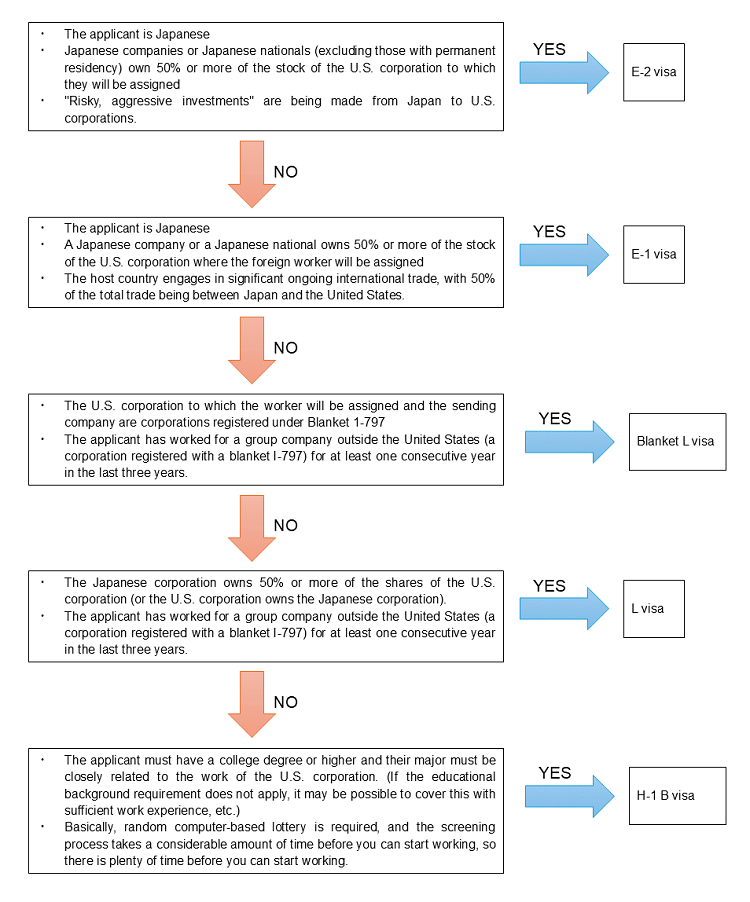Hello, this is Matsui from IMS Legal Professional Corporation. As the new fiscal year begins, many people are entering new phases in their lives. In Japan, April is the peak season for personnel transfers, and we have received a large number of requests for U.S. work visas from individuals being assigned to the United States between March and April.
When it comes time to relocate to the U.S., choosing the appropriate work visa can be especially challenging—particularly for companies expanding into the U.S. for the first time or after a long absence. Today, I’d like to explain how to approach this important decision.
Order of Consideration
In general, we recommend evaluating your options in the following order. A brief explanation of each visa type is provided below:
- E-2 Visa – Investor Visa
- E-1 Visa – Trade Visa
- Blanket L Visa – Intra-Company Transferee Visa (for companies already approved by USCIS as a Blanket L entity)
- Individual L Visa – Intra-Company Transferee Visa (filed individually)
- H-1B Visa – Specialty Occupation Visa
Please refer to the decision flow in the box below.
If you meet the conditions described, proceed to the blue arrow path on the right.
If not, follow the red arrow path downward.

The above does not list all possible conditions, but we recommend starting your evaluation in this order from the top.
Advantages of the E Visa
Why should the E visa be considered before the L visa?
That’s because the E visa offers several advantages that the L visa does not:
- Renewable indefinitely as long as the U.S. business remains operational
→ In contrast, the L visa has a maximum stay limit of 7 years. - Simplified application process through the U.S. Embassy or Consulate in Japan
→ This offers significant time and cost advantages.
→ The L visa, on the other hand, requires filing through U.S. Citizenship and Immigration Services (USCIS), which is typically more time-consuming and expensive.
Advantages of the E-2 Visa
So, why should you prioritize the E-2 visa over the E-1 visa?
- E-1 visa requires that more than 50% of the U.S. entity’s international trade must be consistently conducted between the U.S. and Japan. If this condition is no longer met after the visa is issued, the visa becomes invalid.
- The "investment" under the E-2 visa can be evaluated cumulatively. Therefore, if there has been sufficient investment in the past, further investment is generally not required (although in some cases, such as when adding employees, additional capital may be needed).
As you can see, even though all of these are classified as work visas, there are multiple options, and making the right decision can be complex. However, using the above framework as a guide should help clarify your options.
IMS offers ongoing consultations for U.S. non-immigrant visas. Please feel free to contact us anytime.
Please note that the information provided in this blog is current as of now. It is your responsibility to check the latest information on official government websites.
For more information, please contact us below ↓
https://imsvisa.support/en/contact/





